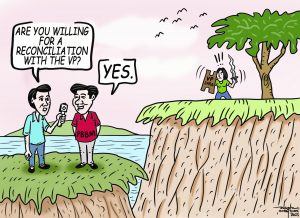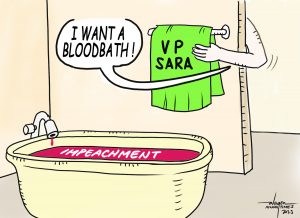BY S.I. RAFFLE
SAFER Internet Day (SID), is officially recognized through Proclamation No. 417 which declares every second Tuesday of February as SID for Filipino Children. This year, the Department of Information and Communications Technology emphasizes the whole-nation approach to creating a safer digital space for children.
The Internet has a rich history dating back to 1969 when scientists and engineers wanted to interconnect computer networks. Today, the whole world is interconnected with this technology paving the way for Overseas Filipino Workers to communicate in real-time with their loved ones in the Philippines. Back in the day, it used to be mailed letters to reach out or a voice-recorded message on a cassette tape.
This technology offers many advantages, especially for education, research, healthcare, and media, among others. However, it poses risks and threats to children as these unfiltered images, vulgar words, and violent and lewd videos can influence their beliefs about the present world we live in and can be a disadvantage if there is no safety net to catch unsafe content.
The whole-nation approach should encourage leaders to create more stringent rules in showcasing children in content creation, particularly in schools. I have seen children who are included in posts which is not curricular or school-related content. In the United States, public schools have implemented the release of information consent. It is a photo and video release form to be signed by the parents or guardians. In this way, the child is protected from any inconvenience of seeing his or her photo on social media, newsletters, or websites. As we have already noticed, bashing and bullying are rampant on the Internet, and protecting our children against this is to prevent this kind of exposure.
Safer Internet Day was first celebrated in Europe in 2004. Now, 100 countries worldwide observed this along with the purpose of responsible Internet use for children. In 2018, then-President Rodrigo Duterte signed this proclamation. This timely government initiative should be undertaken by both public and private sectors to challenge tech giants to help in regulations and control child protection.
Social media pioneer YouTube has made a kid version of the app. Also, there are parental controls that keep kids safe from inappropriate content. Meta, which owns Facebook and Instagram, requires that a child must be at least 13 years old to manage and own an account. Adults who have gadgets should be responsible also to be more strict and regulate such use for the children with expectations and boundaries established.
Internet giants such as Google, Microsoft, and Apple have been so accessible that browsing can generate content not suitable for children. Artificial Intelligence is at the forefront and the ease and convenience of getting information can be disadvantageous for young learners.
There should be more than a safety net to regulate and monitor what the internet shows to our children. Beta Generation, born in 2025 – 2039, will have their hands full with technological wonders right at their fingertips. Filipino children born in the digital era are well-informed and smart about these Internet tools. May they be protected every time they use the World Wide Web and the different applications on phones, laptops, tablets, and desktop computers.


